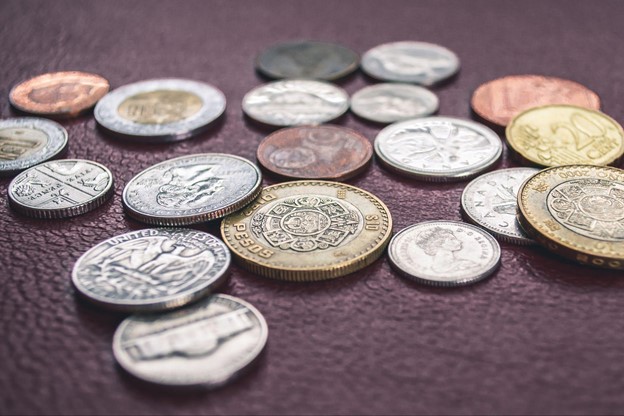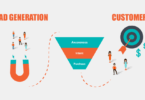If you need money quickly, there are various options to help get it. While some are riskier and costlier than others, they could come in handy in emergencies or for essentials such as medical treatments or car repairs. Other flexible loans and credit cards may offer better rates.

There is a lot to know when you apply for a loan for the first time. If you need money fast, it is important to prepare yourself and have the right paperwork at hand in order to speed up the process.
It is equally important to know about the terms of the loan you are applying for so that you can find the best rates and save money over the life of your loan.
How to Prepare to Get a Loan
Loan applications are reviewed carefully by lenders based on various factors, including your credit history, income, collateral and other financial documents. To make sure that you can meet the monthly repayment obligations successfully it’s essential that you plan ahead.
Before applying, review your credit report and avoid making new credit applications or repaying debts. Furthermore, prepare annual revenue projections as you may need them.
Budgeting
Budgeting is a financial planning practice used by individuals, families, groups, businesses and governments alike to predict future income and expenditures.
Before applying for a loan, it is vitally important to perform an in-depth budgeting exercise. This will enable you to ascertain if and what kind of loan would best meet your needs.
Define all of your monthly expenses, such as mortgage or rent payments, utilities costs, transportation costs and any other recurring payments.
Also factor in any additional sources of income like child support payments, freelance work or second jobs as a way to determine how much a personal loan payment would fit into your budget and whether or not it can be paid back on schedule. This will enable you to determine if it would be possible for repayment to happen in a timely manner.
Collateral
Collateral loans are secured credit options that use collateral as security against debt repayment. Should payments not be met on time, your home or car may be taken back by the lender – typically leading to lower interest rates compared to unsecured credit loans and making these options suitable for borrowers with poor or limited credit histories.
Assets used as collateral vary from lender to lender, but typically include both personal and business assets. Generally speaking, those which are close to cash and have stable value make excellent collateral – for instance real estate is frequently pledged against mortgage loans, while accounts receivable are frequently pledged against business loans.
Collateral loans can be an ideal way for borrowers to finance large purchases like a home or car while building their credit with timely payments and understanding all associated risks.
Credit Score
Your credit score plays a crucial role in determining whether lenders accept or deny your loan application and in establishing its terms – including interest rates and fees.
Lenders often look at your debt-to-income ratio (DTI), which compares your monthly debt payments with your gross income to assess whether or not you can manage a new debt payment.
Other factors that impact your credit scores include the length and type of accounts (revolving vs. installment). A healthy mix between revolving and installment accounts could potentially boost your scores. Your track record of paying bills on time also influences this aspect of your score.
Every lender has different qualification criteria; some require applicants to visit an actual bank or credit union branch while others offer online applications with “soft” credit checks that assess your eligibility without negatively affecting your score.
Interest Rates
Understanding your loan’s interest rate is important. Many lenders provide the option of either a fixed or variable rate – with fixed remaining the same over its entire repayment term, while variable may change based on various market factors.
Some borrowers may prefer variable-rate financing so that they can take advantage of lower rates when available, while others seek consistency in their debt payments for easier budgeting.
It is also wise to consider whether interest rates could unexpectedly increase significantly in the future as any greater-than-anticipated rate increase could lead to negative equity – when you owe more on your loan than it’s worth.

What is a Same-Day Loan?
Same-day loans are short-term financing solutions designed to provide quick access to cash that borrowers can use for unexpected expenses, like car repairs or medical bills. They often come with high costs such as interest and fees that quickly add up, leaving borrowers struggling to repay them in time.
Though many lenders provide same-day loans, not all are equal. Some can be extremely costly and require that borrowers repay all debt before being eligible to apply for more loans or even return to making regular monthly payments – leading to a potentially ever-worsening cycle of debt that leaves borrowers paying off initial loans with multiple additional ones whose fees surpass even that of the initial one.
Same-day loans can be costly, such as payday and cash advance loans. These typically last only weeks or months at most and carry interest rates that can reach 400%; compare that with an APR of 15% from many credit cards!
Other kinds of same-day loans are less costly, including personal loans from banks or credit unions with lower interest rates than payday or cash advance loans, flexible repayment terms and longer repayment periods than payday and cash advance loans. This is why it is important to seek the best possible rates – billigeforbrukslån.no – søk forbrukslån på dagen – it could save you a considerable amount of money over the term of your loan. Doing a few minutes of research could save you a lot of money in the long run.
No matter the lending institution, there are a few basic different types of loans. Read on for more information.
Secured Loans
One of the more popular methods of borrowing money is through secured loans. This form of financing requires using collateral such as your home or car as security for approval at lower rates and faster approval processes from lenders. But it’s important to be aware of any associated risks so you can make an informed decision when considering secured loans.
Secured loans can be used for purchasing anything from cars and homes to investments and debt consolidation. Mortgages and auto loans are among the most commonly available secured loans; you could also obtain a PLOC (secured line of credit). With such options, pledging an initial deposit serves as collateral and ensures a smooth experience when borrowing money.
Secured loans typically allow for easier approval than their unsecured counterparts due to your collateral reducing their risk and providing greater peace of mind for lenders. In addition, secured loans typically offer higher borrowing limits and longer repayment terms than their uninsured counterparts.
However, when applying for secured loans it is essential that you use caution as failure to repay can have dire repercussions for both your finances and credit score. Therefore it is imperative that all available options are carefully considered prior to taking out such a loan.
Before applying for a secured loan, it’s a good idea to review your budget and ensure you can afford its monthly payments.
Submit official applications with multiple lenders in order to compare offers before choosing your lender. It is also recommended to speak to an expert prior to signing any paperwork – this can help avoid costly mistakes that could harm your finances over time.
Personal Loans
Personal loans typically involve payments over an extended period, known as the loan term.
Borrower amounts and repayment schedules often depend on factors like outstanding debts, recent credit inquiries, debt-to-income ratio and more to determine what amount lenders will lend – typically, higher credit scores often lead to reduced interest rates.
Many lenders allow borrowers to apply with cosigners in order to reduce lender risk and allow individuals with lower credit scores to qualify for personal loans.
Personal loans may also be used for emergency expenses such as unexpected medical bills, auto repairs and home renovations as well as consolidating debt in order to save money on monthly payments and more easily manage financial obligations.
Personal loans are typically unsecured loans that do not require collateral as security against the loan. Instead, an underwriting process evaluates each applicant based on factors like their credit history, income stability and employment history to assess if they represent a good risk when lending money.
Once approved, lenders typically send funds directly into the borrower’s bank account either the same or next day following approval depending on which lender it was with. Some may charge fees such as origination fees, late charges and prepayment penalties; it all depends on which one you go with.
Personal loans can be an excellent way to cover emergency expenses or finance large projects such as home renovation or wedding expenses, but it’s essential to remember whether they will actually address the root of the problem, rather than just defer it.







Leave a Comment
You must be logged in to post a comment.